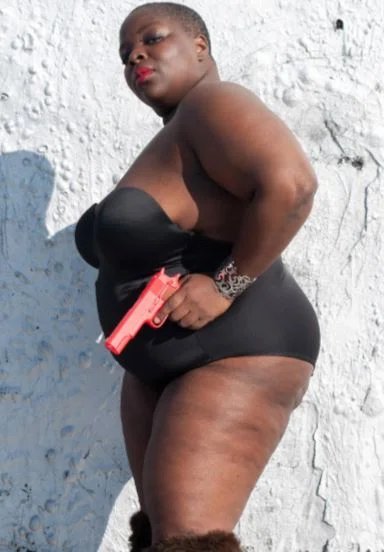There is a lack of intimacy in your work. How much of that is you and how much of that is a sign of the times?
Laurie Simmons: The sign of the times was first and foremost a renunciation of painting. Painting was dead again, and it just seemed like if you wanted to be in the conversation of what I would have called at the time, “the avant garde”, you had to think in certain ways and read certain texts. I really didn’t want to be associated with: number one: the generation of feminist artists, who seemed marginalized (and just to update, I’m grateful to them for paving the way, but it’s part of the responsibility of the next generation to eat their elders), and two: I didn’t want to be a part of a painting or sculpture culture that was male dominated.
I was so excited by the conceptual process, film, and video work that I was seeing in galleries. It seemed really obvious to pick up a camera, because it was fresh and open for investigation. It was the desire; I went to art school, but I didn’t learn anything about the contemporary. When I got to New York it was this huge shock of “the new.” Then, the first year you’re excited, then you’re depressed – it’s like, “What am I supposed to do, how can I be part of it?” Then you come up with a way to be part of it. It seems so old fashioned and naïve right now, but picking up a camera in that way was a more radical thing to do. It was a male dominated history. A museum of modern art prescribed male history.
Do you have any regrets?
So many. [laughs] Mostly small regrets, but they tend to iron themselves out.
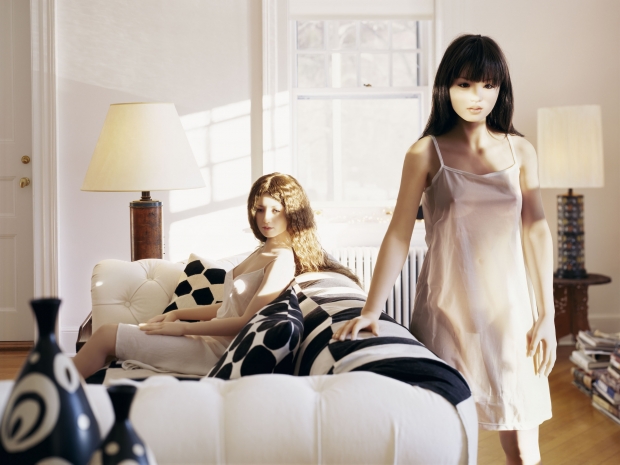
Let’s talk about this new project and how you got interested in it.
The Love Doll was a new beginning for me because I could finally work in human scale. I’ve been waiting my whole life to find a doll that I could move around in the existing envi- ronment. If I knew the love doll looked natural and comfortable in the space, I knew that the image would be successful. It was like working with all the great things about having a life sized doll and all these terrible things about having an inanimate object that was difficult to maneuver. After that series was finished I started searching for where to go, and the love dolls were shown at the Mori Museum in Japan, a show called ‘Love.’ All these different artists had rooms, and in one of these rooms ... the creator of Hatsune Miku, a Japanese vocaloid who has become a pop star, set up iPads with her performing. She’s a hologram, a lanky girl with long blue hair, and she’s had actual sell-out concerts, but she doesn’t really exist. I could spend the whole time talking to you about her, it’s hard to explain the way that this figure has captured the imagination of the Japanese public, I can’t imagine it happening in the U.S., but I fell in love with this character. Anyone in the public can make a song for her, or an animation for her. My first idea was to make a vocaloid who was my age, and I still want to do that, but in investi- gating Miku and going down the rabbit hole, I got really excited about fusing the boundaries between the animate and inanimate, because for years I had been trying. When I was photographing characters and doll figures, I was trying to make humans look like dolls with a great failure rate. Now there are people we have discovered, young women who are surgically enhancing themselves and changing themselves to look like dolls. There are young women now who are virtually indistinguishable from a porcelain doll. For me, it’s creepy, but it’s also like a dream come true to figure out how it is done. The whole idea of being able to mask your gender and identity is cultural. The whole idea of social media is to hide identity and invent identity. You don’t know who you’re tweeting to. I have 16,000 Instagram followers. Who am I to them? What is it? The idea of masking, which has always been interesting to me, is really the focus here.
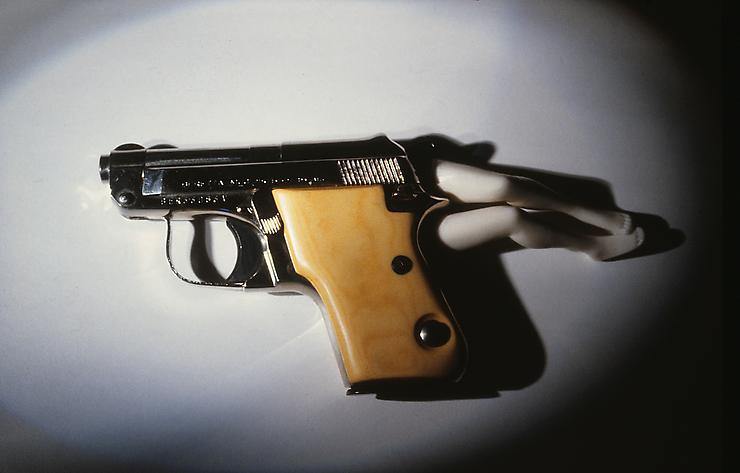
What was the picture of the gun about? I was surprised to see you use a gun.
One of the really cool things about being an artist, you make work and then you have the possibility to have the meaning change for you over the course of time. When I made that picture in the early 90s I wasn’t really thinking about guns and violence. I was thinking about a woman character in a film noir world who put it in her purse, it was more about a caricature who was a gun toting strong woman, a Raymond Chandler kind of character, it was very romantic. Now my friend from New York, who is very active against gun violence, wants to use it as an edition to sell to raise money and consciousness about gun control and gun violence, something I really care about and think about.
Then there’s this other funny story, Jay Z bought The Gun for Beyonce as a present, and she didn’t want it. So she switched it for Perfume Bottle on Legs. I thought, that’s interesting. What did she see all those years later? Because when I made The Gun it was a super popular image. It’s like cigarettes, at a time they were considered sexy. Things change.
What are you going to do after the dolls?
I think that having been an artist for so long and living with an artist, I really see it as everyone is trying to keep themselves interested in what they are doing. If I don’t keep myself turned on about doing this I’m not going to do it anymore, so where can I go? From someone else, it’s another painting that’s exactly the same with one color change, whatever it is: it cant be formulaic and it cant be redundant. I have to go somewhere I can be excited, and if that doesn’t happen, I don’t know what I would do.
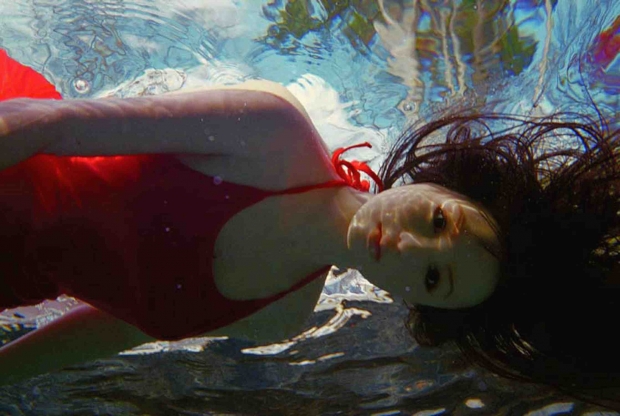
Did you shoot Sam and Dotti before you became an artist?
No. It was another period where I tried to make real people look artificial, and somehow make my characters look like a Douglas Sirk movie, I just wanted something from humans I couldn’t get and that’s a place I always return to. Why can’t I wrest the kind of emotion that I can from a doll? It’s almost like I get too much emotion, too much response, whatever I’m looking for I can’t get it from shooting real people. I’ve tried.
What do you think you’re missing?
I’m looking for artificiality; a kind of repose, a kind of permanence, or else I just like taking pictures of surrogate, recreations of people – it’s more interesting. Just to put a finer point on it, I think that the satisfaction comes from light and a character and trying to find emotion. You can have a doll and light on the doll and turn the doll a fraction and suddenly the expression changes, and the personality changes and there’s something different on their face, just because the light and dark spaces change. That’s what I know how to do, that’s what I can do today. That’s only what I’ve been doing for thirty years! The love doll would look young, old, happy, sad, fat, thin – the picture that I got where the love doll had heavy legs, I was so excited, I just thought, “Wow! I made that happen.”
Define “mother.”
It’s so funny. When you asked me that the first thing that popped into my head was a picture I made in 1976 called Mother Nursery, and the second was another picture I made in 1976 of another doll called Untitled (doll’s head). That’s it.
Even though you work alone, and a lot of the things you work with are inanimate, there seems to be a lot of collabration in your work.
I often say I think I’m a natural collaborator. I really try intuitively to figure out what I can share with the people I’m working with and what they have to offer. I like to be really open. Someone can be working for you and you realize they are an amazing cook, or they can draw beautifully, or they have a talent that is going to contribute so much and figuratively to the table, and I think if you’re open to the people around you, you can really enhance your work. Over the course of making pictures, people that work for me influence my pictures a lot. I don’t have to be the big boss all the time. In the end, I’ll do what I want to do, because that’s the thing about being a visual artist, you are ultimately the decider.
Kaleidoscope House, Tourism, and Talking Objects: What’s the thread going through it?
When the toy company approached me to make a toy, I thought, “I have no interest in making a toy.” And then I thought, “Ah ha! If I make this house, I can use it as a prop,” which I did. It was dreamy because the doors were lucite and colorful, so when I positioned them the light cast on the furnishing, which is exactly what I like to do. So that was just another artificial place for me to go. Tourism was again, really focused on color, and it was when I decided I wanted to take the female character and move her around the world. So, I gathered photographs of world monuments, photographs that had faded to blue, faded to pink, faded to green, and I color coordinated these female figures against these backgrounds. I feel like my work has always been about the female in an interior space, even when the female is in exterior space, it has a kind of interiority because I’m working with a rear screen or some sort of enclosure. Talking Objects is when I got a little bit off track because I went to the ventriloquist museum, and I was shooting ventriloquist dummies in these rooms and suddenly I saw these objects that ventriloquists use talking gloves and talking walking sticks. They’re extra tricks, and I put them in rooms with rear screen projected backdrops. That was like a little journey away from the main topic for a while, but still inanimate objects that speak, in- animate objects that are anthropomorphized and bringing things to life that are not meant to be alive. I think that that’s the thread.
For your new show you worked with real people what was that experience like & did you enjoy it?
Of course the maskers looked like dolls but the fact that I wasn’t responsible for posing every inch of the model’s body was an amazing relief and also led me to surprising places. As my Kigurumi maskers became more comfortable in their costumes they revealed more of the persona they were taking on- in other words they grew into their roles and would come up with more and more exotic poses. There was obviously a liveliness and an aliveness I could never find working with a doll.
For me having a character that looks like a doll but moves on it’s own is hugely surreal...kind of like entering a dream space.
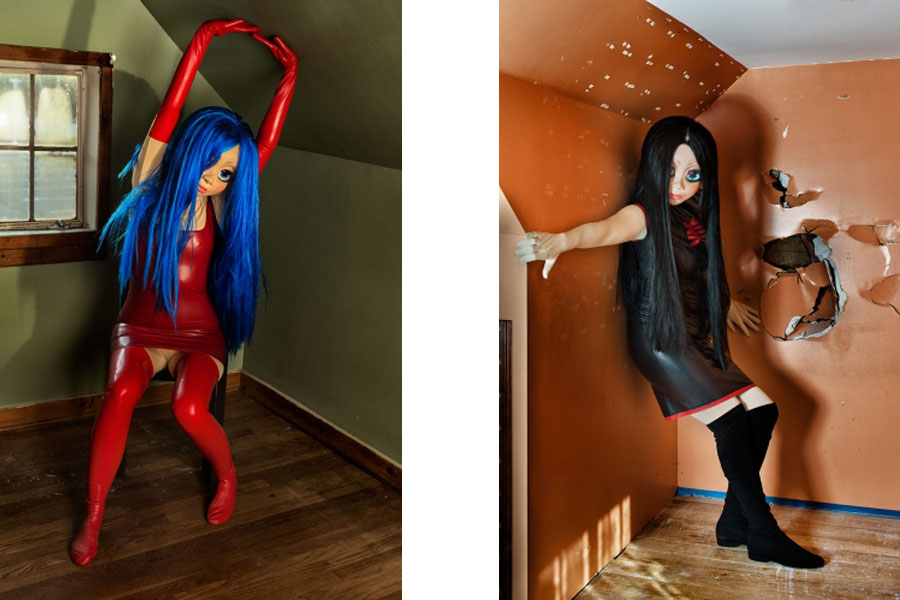
Do you see working with real people again?
Oddly, they don’t seem real when I’m working with them. I feel like I’ve discovered a race of people who inhabit an interstitial place between human and non-human, human and doll. Whatever this is, yes, I’d like to continue working this way.
Do you feel the collaboration enhanced the creative process & if yes how so?
Again the element of surprise in the sense that I grew to expect the unexpected really made me see new things. My former subject (the love doll) was a 70 pound dead weight that I was responsible for animating. Some days I just couldn’t get there. With my human subjects there was always a revelation even if it was just a character stretching to reach a wall or sticking a hip out. Remember there is a lack of self-conscious- ness that goes along with masking because your true identity is not disclosed. My characters definitely performed outside of their usual comfort zone of the Laurie Simmons Studio.
What’s your personal fantasy?
I think most of the time when I’m fantasizing I’m thinking about a movie I want to make, and the character; what she looks like and what she thinks about the art that she makes.



